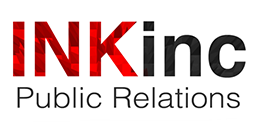Hashtags are now an interictal part of any social media campaign whether you are on Twitter, Instagram, or Facebook. If it is done right, you can get like-minded audiences who will want to see your content but don’t know about your brand to gain awareness. Aside from that, it is a great way to continue to keep your brand relevant by relating your brand with a piece of news or a trending topic. However, some instances people have had found hashtags that seem to work perfect to their brand, but don’t take the time to find out what the hashtag is used for. This can get you publicity for your brand, but for all the wrong reason and put you in crisis mode. Here are a few examples as to what I mean:
Sometimes, it isn’t so much the hashtag’s use as it is the timing. In 2011, Entenmann’s decided to create a playful Tweet attempting to crowdsource stories of people indulging in their favorite treats and they used #notguilty in the tweet. Now, any other day would have probably been fine, but this was the exact same day as the verdict of the Casey Anthony trial. The Tweet quickly was trending before the brand could take it down and apologize to its followers.
In 2014, DiGiorno pizza made a faux pas that has been taught in Public Relations class as a cautionary tale. With the knowledge that pizza is a reason to stick around a party or maybe a reason to head to the break room, the company Tweeted out “He had pizza #WhyIStayed”. Seemingly innocuous tweet with a humorous sounding hashtag, right? Well, your decision might change when you find out #WhyIstayed is for people sharing reasons why people stayed in abusive relationships. This little gem of knowledge changed that humorous sounding Tweet into a careless use of a community hashtag that helps people in traumatic situations, and that is how it was received.
Of course, these brands have the best of intentions at heart, but even as recent as last year, we are still seeing some problems with Tweets and Hashtags. Sometimes, it’s not so much the hashtag as the message around it, take for example Vera Bradley’s #itsgoodtobeagirl campaign. By itself, the hashtag works well, but there was room for error in generalizing an entire gender this way. Unfortunately, Vera Bradley took it a step further with messages like “That moment when a gentleman offers you his seat #itsgoodtobeagirl,” which faced major criticism for being sexist.
So, as growing companies attempting to stay relevant and get our messages in front of customers, are hashtags worth it? Of course. But, it is also worth taking the five minutes to check what your hashtag is used for BEFORE sending a Tweet out, check to see if your timing is right, and knowing how you are going to frame the message.
